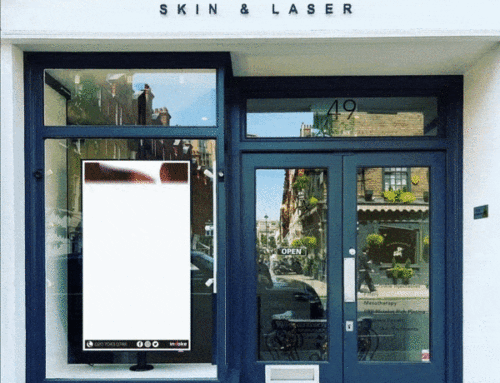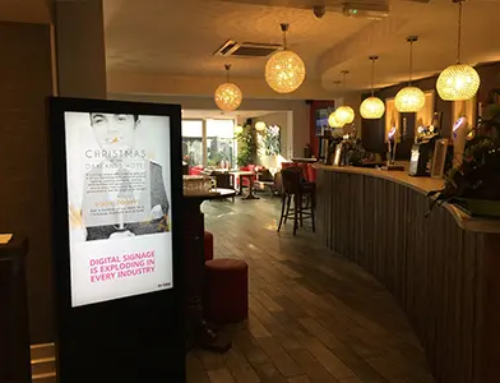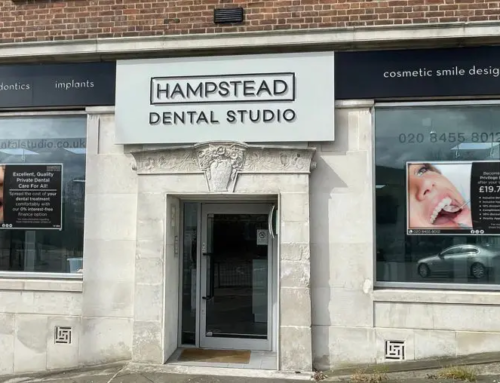DOOH Signage isn’t quite a new-wave idea, as retailers have been experimenting with analogue and VHS signage since their rise in popularity of the 1980s. With Cathode-Ray-Tube (CRT) monitors providing a bulky TV display, Digital Signage hasn’t always provided the slick brand aesthetic promised today. In the early 2000s, retailers were the first to jump onto the trend for flat-panel displays before CRTs became obsolete in the home; this was the time for flat-screen and LCD technology. Jumping forward to 2016, many retailers are continuing to use a combination of well-known home technologies (such as DVD playback, Blu-Ray and PC presentation software) to create visual display, without knowledge that today’s heightened technology can far-excel their obvious capabilities. By combining commercial-grade signage with professional software; Digital Signage can become fluid, interactive, responsive and innovative.
What is Digital Out of Home?
Digital Out of Home (DOOH) is a unique way to attract the attention of an outdoor audience by utilising moving-image and touch-screen technology. This technology is growing as the industry leader, due to its ability to deliver adaptable and dynamic content from a centrally controlled system which can be catered to any business sector. Digital Screens can display real-time information or be regularly updated to the changing user-environment, making it a versatile solution for all forms of communication. Digital Ads allow for interaction; visual merchandising, through-window touch-screen, customer camera display, feedback capture, Wi-Fi provision and personalised user-experiences are all a possibility. DOOH has become increasingly popular amongst a plethora of vertical markets, from independent retailers to medical centres – Digital Signage has the flexibility to improve internal communications, provide vital public information and increase business ROI with advertising.
Why is OOH so Effective?
‘Out of Home’ (OOH) is one of the most successful forms of marketing as it puts a strategic focus on gaining attention from an “on-the-go” audience when they’re unable to decline it. In today’s consumer-driven climate, people tend to go out of their way to avoid traditional outbound marketing techniques, often choosing to skip Television commercials, delete email or download online AdBlockers. OOH is a great way to combat this audience fragmentation – whether you’re on the way to work, waiting in city traffic queues or even attending a dental clinic; it’s likely you’ve been receptive to an array of OOH marketing techniques without even noticing. In fact, 63% of people report that DOOH marketing techniques have engaged their attention, with 84% of UK retailers acknowledging that it has successfully increased their public brand awareness*. OOH is a great way to gain interest from consumers in a non-invasive or disruptive way; utilising entertainment, informative and distraction techniques to remain in your audience’s subconscious memory. According to industry reports, Digital Out of Home can capture 400% more audience views than other static displays, with 8/10 customers having entered a retail shop due to Digital Signage.
What Makes a Successful OOH Campaign?
Active Space
The ‘Active Space’ describes a physical and interactive environment in which consumers can be engaged outside of their usual territory, using mutual influencers such as sound, movement, visuals and atmosphere. To create a great OOH campaign, consider a location in which your audience would naturally congregate or pass through, and are likely to wait to be receptive to engagement.
Audience Targeting
With advances in technology, audience profiling has become easy with number-crunching software and the use of Big Data. By creating audience segments, you can target your audience based upon age, gender, interests and most importantly location – down to the frequency of their visiting habits. Using a standardized OOH rating system, it’s also possible to account for and target consumers in cars, as pedestrians or congregating in open locations.
Successful Engagement
Consumers love to feel involved by brands but don’t appreciate being unduly interrupted. By targeting your audience’s specific interests in a familiar location, you can inspire consumers to engage with your campaign and allow it to go viral organically. Choose a platform which involves a natural level of audience participation, a call-to-action and component of ‘share-ability’. Think about the campaigns aesthetic; people love to share their experiences on Facebook and Instagram – creating a photogenic scenario will increase your brands-reach beyond the call-for-action response.
Linking Mobile
As mentioned above, it’s a great idea to link your DOOH campaign with mobile elements such as Social Media, App Downloads or opportunities for E-Commerce. It’s said that 41% of all smart phone purchases are conducted on-the-go*, allowing for OOH experiences to influence your consumers immediate buying-decisions. By directing your audience to cross-engage with your brand via mobile phone, it can also provide you with vital data necessary to evaluate and improve your future campaigns.
Written by: Hannah May – Social Marketing Exec


